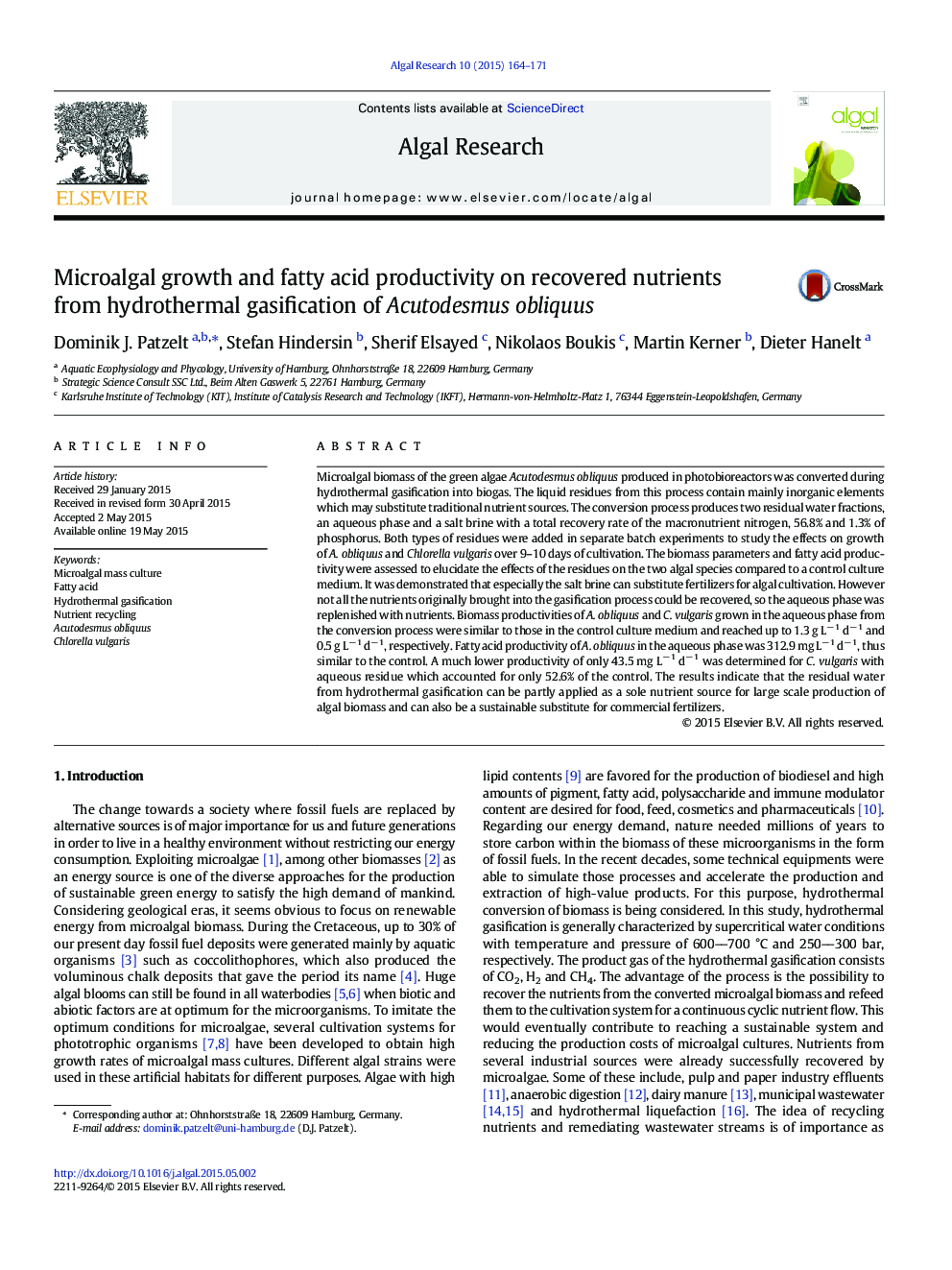| Article ID | Journal | Published Year | Pages | File Type |
|---|---|---|---|---|
| 1742041 | Algal Research | 2015 | 8 Pages |
•We examine the hydrothermal gasification of microalgae.•Growth parameters of microalgae cultivated with recovered nutrients is examined.•Recovered nutrients can partly substitute commercial fertilizers.
Microalgal biomass of the green algae Acutodesmus obliquus produced in photobioreactors was converted during hydrothermal gasification into biogas. The liquid residues from this process contain mainly inorganic elements which may substitute traditional nutrient sources. The conversion process produces two residual water fractions, an aqueous phase and a salt brine with a total recovery rate of the macronutrient nitrogen, 56.8% and 1.3% of phosphorus. Both types of residues were added in separate batch experiments to study the effects on growth of A. obliquus and Chlorella vulgaris over 9–10 days of cultivation. The biomass parameters and fatty acid productivity were assessed to elucidate the effects of the residues on the two algal species compared to a control culture medium. It was demonstrated that especially the salt brine can substitute fertilizers for algal cultivation. However not all the nutrients originally brought into the gasification process could be recovered, so the aqueous phase was replenished with nutrients. Biomass productivities of A. obliquus and C. vulgaris grown in the aqueous phase from the conversion process were similar to those in the control culture medium and reached up to 1.3 g L− 1 d− 1 and 0.5 g L− 1 d− 1, respectively. Fatty acid productivity of A. obliquus in the aqueous phase was 312.9 mg L− 1 d− 1, thus similar to the control. A much lower productivity of only 43.5 mg L− 1 d− 1 was determined for C. vulgaris with aqueous residue which accounted for only 52.6% of the control. The results indicate that the residual water from hydrothermal gasification can be partly applied as a sole nutrient source for large scale production of algal biomass and can also be a sustainable substitute for commercial fertilizers.
